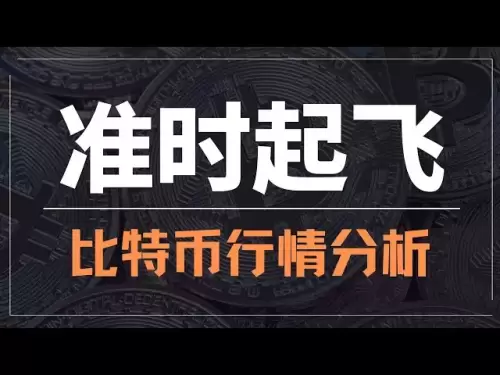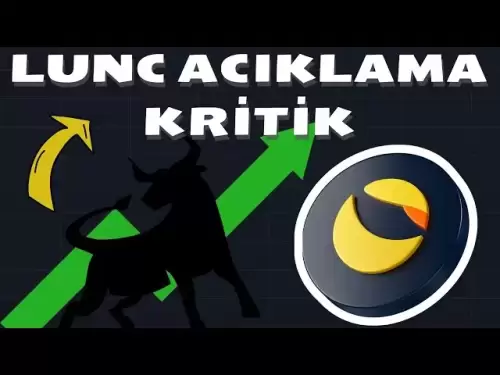-
 Bitcoin
Bitcoin $116800
1.37% -
 Ethereum
Ethereum $3832
5.15% -
 XRP
XRP $3.063
2.69% -
 Tether USDt
Tether USDt $1.000
0.04% -
 BNB
BNB $774.1
0.84% -
 Solana
Solana $170.7
1.56% -
 USDC
USDC $0.0000
0.01% -
 Dogecoin
Dogecoin $0.2142
5.31% -
 TRON
TRON $0.3406
1.90% -
 Cardano
Cardano $0.7635
3.81% -
 Hyperliquid
Hyperliquid $39.55
2.42% -
 Sui
Sui $3.732
7.71% -
 Stellar
Stellar $0.4127
4.25% -
 Chainlink
Chainlink $17.80
6.91% -
 Bitcoin Cash
Bitcoin Cash $576.7
1.66% -
 Hedera
Hedera $0.2521
3.28% -
 Ethena USDe
Ethena USDe $1.001
0.01% -
 Avalanche
Avalanche $22.66
2.19% -
 Litecoin
Litecoin $121.3
2.98% -
 UNUS SED LEO
UNUS SED LEO $8.959
-0.31% -
 Toncoin
Toncoin $3.325
2.88% -
 Shiba Inu
Shiba Inu $0.00001263
2.84% -
 Uniswap
Uniswap $10.11
4.79% -
 Polkadot
Polkadot $3.769
3.22% -
 Dai
Dai $1.000
0.01% -
 Bitget Token
Bitget Token $4.413
1.46% -
 Monero
Monero $272.9
-4.98% -
 Cronos
Cronos $0.1488
4.22% -
 Pepe
Pepe $0.00001088
4.01% -
 Aave
Aave $273.0
4.73%
Where is the strong support shown by Bitcoin's IOMAP indicator?
Bitcoin's IOMAP indicator helps identify support and resistance levels by analyzing where holders bought Bitcoin, showing strong support around $25,000 and $30,000.
Apr 19, 2025 at 04:14 pm

Bitcoin's In/Out of the Money Around Price (IOMAP) indicator is a powerful tool used by traders and analysts to identify potential support and resistance levels based on the behavior of Bitcoin holders. The IOMAP indicator aggregates data on the number of addresses that have purchased Bitcoin at various price levels and categorizes them as either "in the money" (profitable) or "out of the money" (unprofitable) based on the current market price. This article will delve into how the IOMAP indicator works, how to interpret it, and where it currently shows strong support for Bitcoin.
Understanding the IOMAP Indicator
The IOMAP indicator is designed to provide a visual representation of the supply and demand dynamics in the Bitcoin market. It plots the cumulative number of Bitcoin addresses that have bought at different price levels, along with the total amount of Bitcoin held at those levels. The indicator is divided into two main sections: addresses that are "in the money" and those that are "out of the money." When the current market price is above the price at which an address bought Bitcoin, that address is considered "in the money." Conversely, if the current market price is below the purchase price, the address is "out of the money."
How to Interpret the IOMAP Indicator
Interpreting the IOMAP indicator involves analyzing the distribution of Bitcoin holders at different price levels. Strong support levels are typically identified where there is a significant concentration of "out of the money" addresses. These are addresses that have bought Bitcoin at a higher price than the current market price and are therefore holding at a loss. If the price approaches this level, these holders are less likely to sell, as doing so would realize their losses. This reluctance to sell can create a strong support level, as the price struggles to break through this concentration of holders.
Conversely, resistance levels are identified where there is a significant concentration of "in the money" addresses. These are addresses that have bought Bitcoin at a lower price than the current market price and are therefore holding at a profit. If the price approaches this level, these holders may be tempted to sell and realize their gains, which can create a resistance level.
Current Strong Support Levels According to IOMAP
As of the latest data, the IOMAP indicator shows several strong support levels for Bitcoin. One of the most significant support levels is around the $25,000 price point. At this level, there is a large concentration of addresses that have bought Bitcoin between $24,000 and $26,000 and are currently holding at a loss. This concentration of "out of the money" addresses suggests that if the price were to approach this level, these holders would be less likely to sell, potentially creating a strong support level.
Another notable support level is around the $30,000 price point. At this level, there is also a significant number of addresses that have bought Bitcoin between $29,000 and $31,000 and are currently holding at a loss. This concentration of "out of the money" addresses indicates another potential strong support level for Bitcoin.
How to Use the IOMAP Indicator in Trading
Using the IOMAP indicator in trading involves identifying these support and resistance levels and incorporating them into your trading strategy. Here are some steps to effectively use the IOMAP indicator:
- Identify Key Levels: Use the IOMAP indicator to identify the key support and resistance levels based on the concentration of "out of the money" and "in the money" addresses.
- Monitor Price Action: Keep an eye on the price action as it approaches these levels. If the price approaches a strong support level and bounces off it, this can be a signal to buy. Conversely, if the price approaches a strong resistance level and fails to break through it, this can be a signal to sell.
- Combine with Other Indicators: The IOMAP indicator should not be used in isolation. Combine it with other technical indicators, such as moving averages, RSI, and MACD, to confirm your trading signals.
- Set Stop-Loss and Take-Profit Levels: Based on the identified support and resistance levels, set your stop-loss and take-profit levels accordingly. For example, if you are buying near a strong support level, you might set your stop-loss just below that level and your take-profit at the next resistance level.
Limitations of the IOMAP Indicator
While the IOMAP indicator is a valuable tool for identifying potential support and resistance levels, it is not without its limitations. One of the main limitations is that it is based on historical data and does not account for future market sentiment or external factors that can influence the price of Bitcoin. Additionally, the indicator can sometimes be misleading if there is a sudden shift in market sentiment or if large holders (whales) decide to sell their Bitcoin at a loss.
Another limitation is that the IOMAP indicator does not provide information on the size of the addresses holding Bitcoin at different price levels. A large number of small addresses holding at a certain price level may not have the same impact on the market as a smaller number of large addresses holding at the same level.
Frequently Asked Questions
Q: Can the IOMAP indicator be used for other cryptocurrencies?
A: Yes, the IOMAP indicator can be used for other cryptocurrencies as long as the necessary data on address activity and purchase prices is available. However, the effectiveness of the indicator may vary depending on the liquidity and trading volume of the cryptocurrency.
Q: How often should the IOMAP indicator be updated?
A: The IOMAP indicator should be updated regularly to reflect the latest market data. Most traders and analysts update the indicator on a daily or weekly basis, depending on their trading strategy and the volatility of the market.
Q: Is the IOMAP indicator suitable for long-term investors?
A: While the IOMAP indicator can be useful for identifying short-term support and resistance levels, it may not be as effective for long-term investors. Long-term investors are typically more focused on fundamental analysis and the overall market trend rather than short-term price movements.
Q: Can the IOMAP indicator be used in conjunction with on-chain metrics?
A: Yes, the IOMAP indicator can be used in conjunction with on-chain metrics such as transaction volume, active addresses, and network hash rate to provide a more comprehensive view of the market. Combining these metrics can help traders and analysts make more informed decisions.
Disclaimer:info@kdj.com
The information provided is not trading advice. kdj.com does not assume any responsibility for any investments made based on the information provided in this article. Cryptocurrencies are highly volatile and it is highly recommended that you invest with caution after thorough research!
If you believe that the content used on this website infringes your copyright, please contact us immediately (info@kdj.com) and we will delete it promptly.
- Ripple, Rail, and Stablecoin Payments: A $200M Power Play
- 2025-08-07 22:50:12
- Punisher Coin Presale: The Next $Trump? Aiming for 100x Gains!
- 2025-08-07 22:50:12
- Riding the Crypto Wave: Presale Cryptos, Cold Wallets, and the BTC Bull Run
- 2025-08-07 23:10:12
- Crypto's Wild Ride: Punisher Coin, Popcat, and the Meme Coin Mania
- 2025-08-07 23:10:12
- Bitcoin Price, XRP Prediction, Cryptocurrency: Navigating the Wild West of Digital Assets
- 2025-08-07 23:15:12
- WiMi, Quantum Computing, and AR Tech: Navigating the Future Today
- 2025-08-07 22:30:12
Related knowledge

How to avoid common crypto investment mistakes?
Jul 13,2025 at 01:35am
Understanding the Risks of Crypto InvestmentInvesting in cryptocurrency can be highly rewarding, but it also comes with significant risks. One of the ...

What is a long-short crypto strategy?
Jul 15,2025 at 10:56am
Understanding the Basics of a Long-Short Crypto StrategyA long-short crypto strategy is an investment approach where traders simultaneously take long ...

What is a long-short crypto strategy?
Jul 11,2025 at 01:28pm
Understanding the Basics of Long-Short Crypto StrategyA long-short crypto strategy is an investment approach where traders take both long and short po...

How to use the RSI indicator for crypto?
Jul 12,2025 at 03:56pm
Understanding the RSI Indicator in Cryptocurrency TradingThe Relative Strength Index (RSI) is a momentum oscillator used to measure the speed and chan...

Is copy trading a good strategy for crypto beginners?
Jul 12,2025 at 08:28am
Understanding Copy Trading in the Cryptocurrency MarketCopy trading is a strategy where novice traders replicate the trades of experienced investors a...

How to build a crypto portfolio with $1000?
Jul 13,2025 at 08:14pm
Understanding the Basics of Cryptocurrency InvestmentBuilding a crypto portfolio with $1000 starts with understanding the fundamentals of cryptocurren...

How to avoid common crypto investment mistakes?
Jul 13,2025 at 01:35am
Understanding the Risks of Crypto InvestmentInvesting in cryptocurrency can be highly rewarding, but it also comes with significant risks. One of the ...

What is a long-short crypto strategy?
Jul 15,2025 at 10:56am
Understanding the Basics of a Long-Short Crypto StrategyA long-short crypto strategy is an investment approach where traders simultaneously take long ...

What is a long-short crypto strategy?
Jul 11,2025 at 01:28pm
Understanding the Basics of Long-Short Crypto StrategyA long-short crypto strategy is an investment approach where traders take both long and short po...

How to use the RSI indicator for crypto?
Jul 12,2025 at 03:56pm
Understanding the RSI Indicator in Cryptocurrency TradingThe Relative Strength Index (RSI) is a momentum oscillator used to measure the speed and chan...

Is copy trading a good strategy for crypto beginners?
Jul 12,2025 at 08:28am
Understanding Copy Trading in the Cryptocurrency MarketCopy trading is a strategy where novice traders replicate the trades of experienced investors a...

How to build a crypto portfolio with $1000?
Jul 13,2025 at 08:14pm
Understanding the Basics of Cryptocurrency InvestmentBuilding a crypto portfolio with $1000 starts with understanding the fundamentals of cryptocurren...
See all articles

























































































